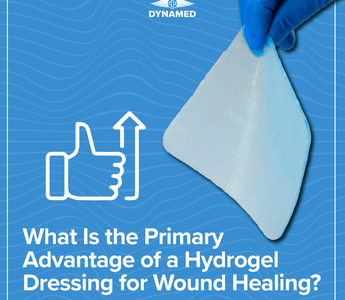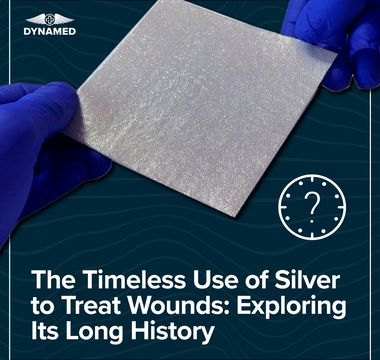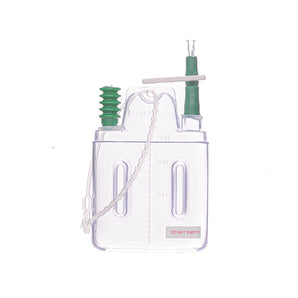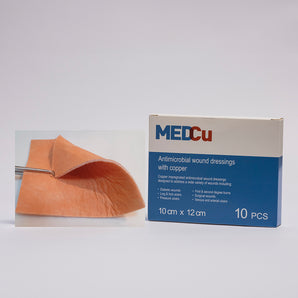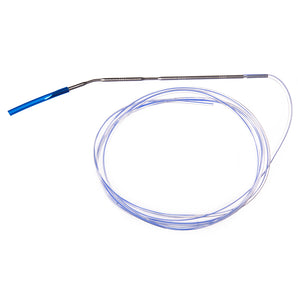In the realm of wound care and surgical innovation, hydrogel dressings have emerged as a pivotal solution for enhancing the healing process. These dressings are particularly effective for dry or minimally exuding wounds, offering a unique advantage by maintaining a moist environment crucial for recovery. By donating moisture to the wound, hydrogel dressings facilitate faster epithelization, which is essential for skin regeneration.
Our focus is on understanding the primary advantage of hydrogel dressings, which lies in their ability to relieve pain while promoting healing. This dual function not only enhances patient comfort but also supports quicker recovery. As we delve into the specifics, we'll explore how these dressings create an optimal healing environment, reducing the wound bed temperature and encouraging granulation. For those seeking advanced wound care solutions, hydrogel dressings present a reliable and effective option.
Key Takeaways
- Moist Environment Maintenance: Hydrogel dressings effectively maintain a moist wound environment, crucial for faster healing and skin regeneration by facilitating epithelialisation.
-
Pain Relief and Comfort: These dressings offer dual benefits of relieving pain and promoting healing, enhancing patient comfort and supporting quicker recovery.
-
Versatile Applications: Hydrogel dressings are advantageous for treating chronic wounds, ulcers, pressure sores, and burns due to their soothing, non-adherent nature and moisture-retentive properties.
-
Mechanism of Action: They enable autolytic debridement by softening necrotic tissue, allowing for its natural removal, thus ensuring a clean wound bed and accelerating healing.
-
Types and Adaptability: Available in multiple forms such as sheet, amorphous, and impregnated gauze, hydrogel dressings can be tailored to specific wound care needs, optimising recovery outcomes.
- Clinical Considerations: While highly effective for dry or minimally exuding wounds, hydrogel dressings may not be suitable for heavily exuding wounds, requiring appropriate selection and application to avoid complications like maceration.
Understanding Hydrogel Dressings
Hydrogel dressings play a pivotal role in advanced wound care, focusing on healing dry or minimally exuding wounds. By understanding their composition and different types, we can see how they enhance patient recovery and comfort.
Composition and Structure
Hydrogel dressings consist of a gel-like material that is mainly water, alongside polymers like glycerin and polyvinyl alcohol. Their semi-transparent nature allows us to observe the wound without disturbing it. These dressings are known for their high flexibility and permeability, allowing air and moisture vapour to pass through easily. This structure is crucial for creating a moist wound healing environment, which is essential not only for granulation but also for epithelization.
Types of Hydrogel Dressings
Hydrogel wound dressings come in several forms, each tailored to specific wound care needs. Sheet hydrogels, for example, offer a solid layer that's easy to apply. Amorphous hydrogels can be moulded to fit the shape of any wound, while impregnated gauze provides extra absorption for wounds with light exudation.
Distinct from other advanced wound products like hydrocolloid or silver wound dressings, hydrogels are primarily aimed at hydrating dry wounds. By selecting the appropriate type, we can optimize healing and improve patient outcomes.
Mechanism of Action
Hydrogel dressings play a crucial role in wound care, offering unique mechanisms that facilitate healing. By creating a moist environment, they enhance the wound healing process through specific actions.
Moisture Retention
Hydrogel dressings are renowned for their superior ability to retain moisture, crucial for wound healing. These dressings, primarily composed of polymers, can hold large amounts of water, ensuring the wound remains hydrated. This moist environment promotes cellular activities fundamental for tissue repair and regeneration.
Autolytic Debridement
Another key mechanism is autolytic debridement. Hydrogel dressings facilitate this process by softening and liquefying necrotic tissue, allowing the body to naturally remove it without external intervention. This promotes a clean wound bed, accelerating the healing process. By dissolving dead tissue, the hydrogel dressing supports a more efficient and less painful removal of debris.
Hydrogel dressings from companies like Dynamed, which are specialised in advanced wound care technologies, exemplify the importance of moisture control and debridement in effective wound management.
Ever wondered how modern wound care has evolved to offer more patient-friendly solutions? At Dynamed, South Africa's premier producer of both basic and advanced wound care products, we pride ourselves on providing medical devices, consumables, and pharmaceuticals that meet the highest standards of care. Our line-up caters to a spectrum of needs, ensuring that healthcare professionals can choose the right treatment options for every situation. But why do these products matter so much? Let’s dive in.
Insightful Tips for Choosing Wound Dressings
Selecting the right dressing can significantly affect recovery. Here’s how we recommend doing it:
-
Assess Wound Type: Determine if the wound is dry or exuding, and choose a dressing that matches its needs—like our hydrogel dressings for moisture donation.
-
Consider Infection Risks: If infection is a concern, consider antimicrobial wound dressings. They offer additional protection against bacteria while promoting healing.
- Comfort Factor: Opt for dressings that reduce pain during use. Our products are tailored to maximise patient comfort without compromising on effectiveness.
Busting the Myths: FAQs on Wound Care
-
Can all wounds use the same dressing?
Definitely not. Different wound types and conditions call for specific dressings, hence why our range includes various options like silver and hydrocolloid dressings.
-
What makes advanced products different?
Advanced wound care, such as antimicrobial solutions, actively enhances healing through technology-driven features like moisture retention and infection control.
Behind the Scenes: Our Manufacturing Process
Ever considered what goes into making top-notch wound care products? At Dynamed, we follow stringent protocols to ensure every item we produce surpasses quality expectations. Our state-of-the-art facility employs highly skilled professionals who continually research and innovate to refine our product lines.
By keeping abreast of medical advancements and employing eco-friendly practices, we secure our place as a leader in the wound care market. Curious to see more of our offerings? Visit us at Dynamed.
Future Directions
With continual research and development, we’ve set our sights on broadening our range, incorporating even more advanced solutions to tackle emerging healthcare challenges. Our goal? To remain your trusted partner in wound management and beyond.
At Dynamed, our mission is to deliver sophisticated solutions while keeping comfort and efficiency at the heart of patient care. We're not just manufacturing products; we're implementing innovations that matter.
Clinical Applications
Hydrogel dressings reshape how we approach wound management by offering distinct benefits in various clinical scenarios.
Chronic Wounds
These dressings provide significant advantages for chronic wounds like ulcers and pressure sores. By maintaining a moist environment, they facilitate the healing process and reduce the formation of scar tissue. For instance, using a hydrogel dressing for non-healing diabetic foot ulcers optimises healing. It prevents these ulcers from becoming infected, limiting complications and improving patient comfort. The gentle nature of hydrogels makes frequent dressing changes more bearable for patients with sensitive skin, offering a non-adherent solution that doesn't dry out or stick to the wound.
Burn Treatment
Hydrogel dressings are ideal for burn wounds due to their cooling and pH-balancing properties. They provide a soothing effect, alleviating pain and reducing inflammation while promoting a favourable healing environment. For partial-thickness burns, the hydration provided by hydrogels supports tissue regeneration and minimises itching. If used early, these dressings can decrease the risk of hypertrophic scarring. Additionally, they're easy to apply and remove, which is crucial in treating delicate burn areas without causing further trauma.
Dynamed Pharmaceuticals in South Africa consistently advances wound care by offering versatile solutions, such as hydrogel dressings, that cater to diverse clinical needs. More information on their innovations and product range is available on their website.
Limitations and Considerations
Dynamed, South Africa's leading manufacturer, excels in creating basic and advanced wound care products, medical devices, consumables, and pharmaceuticals. Why does this matter? Well, effective wound care is crucial for recovery, and with Dynamed's innovative solutions, patients experience improved healing and comfort. Specialising in hydrogel, hydrocolloid, and antimicrobial dressings, Dynamed ensures versatile and effective treatments for various wound types.
The Importance of Advanced Wound Care
Advanced wound care involves techniques and products specifically designed to promote faster healing and prevent complications. In our practice, we see that traditional methods, while useful, often fall short in handling complex wounds like chronic ulcers or deep tissue injuries. Dynamed's solutions, including hydrogel and hydrocolloid dressings, provide the necessary environment for optimal healing. These products maintain a moist wound environment, crucial for tissue regeneration and autolytic debridement.
Hydrogel Dressing: A Step-by-Step Guide
Applying hydrogel dressings is fairly straightforward, enhancing the healing process with ease. Let's walk through the steps:
-
Clean the Wound: Use a saline solution to gently cleanse the area. This ensures all debris is removed.
-
Apply the Hydrogel: Carefully place a layer over the wound, covering the entire area.
-
Secure with a Secondary Dressing: Use medical tape or an adhesive bandage to keep the hydrogel in place.
- Monitor Regularly: Change the dressing as advised, typically every 1 to 3 days, to maintain a fresh, moist environment.
Perks and Real-World Examples
Hydrogel dressings aren't just about moisture; they're pain-relieving too. Many patients, including those with diabetic foot ulcers, report less discomfort and quicker recovery times. For example, at a clinic using Dynamed's hydrogel, patients saw a significant reduction in healing time and better scar outcomes.
Considerations for Effective Wound Care
Like any treatment, hydrogel dressings have some limitations. They're best for light to moderate exuding wounds and may not suit heavily exuding wounds. Also, while they promote autolytic debridement, they must be used appropriately to prevent maceration. Understanding the wound type and patient needs ensures the best results, and for complex cases, consulting with a healthcare professional might be necessary.
For more insights into our range and innovations, visit Dynamed. By staying informed and utilising the right products, we can improve wound management outcomes significantly.
Conclusion
Hydrogel dressings undeniably offer a significant advantage in wound care by providing a moist environment that accelerates healing and enhances patient comfort. Their ability to relieve pain while promoting tissue repair makes them an invaluable tool in managing various wound types. By understanding the different types of hydrogel dressings and their specific applications, we can optimise patient outcomes and ensure effective wound management. As we continue to explore and innovate in this field, hydrogel dressings stand out as a reliable and advanced solution for both acute and chronic wound care challenges.
Frequently Asked Questions
What are hydrogel dressings used for in wound care?
Hydrogel dressings are primarily used for dry or minimally exuding wounds. They maintain a moist environment crucial for faster healing and skin regeneration. These dressings not only relieve pain but also support quicker recovery by promoting healing, making them an ideal choice for advanced wound care solutions.
How do hydrogel dressings aid in wound healing?
Hydrogel dressings facilitate healing by retaining moisture, which is essential for promoting cellular activities vital for tissue repair and regeneration. They also help in autolytic debridement, softening and liquefying necrotic tissue, thereby allowing the body to naturally remove debris and promote a clean wound bed.
Are hydrogel dressings suitable for all types of wounds?
Hydrogel dressings are best suited for light to moderate exuding wounds. They may not be appropriate for heavily exuding wounds due to their high moisture content. It's important to select the right type based on wound characteristics, infection risks, and patient comfort for optimal results.
What types of hydrogel dressings are available?
There are several types of hydrogel dressings, including sheet hydrogels, amorphous hydrogels, and impregnated gauze. Each type is designed to meet specific wound care needs, allowing healthcare providers to optimise healing and improve patient outcomes.
Can hydrogel dressings prevent scar tissue formation?
Yes, hydrogel dressings can help reduce scar tissue formation by maintaining a moist environment that facilitates healing. This feature is beneficial for chronic wounds such as ulcers and pressure sores, enhancing recovery by reducing the risk of infection and scarring.
Are hydrogel dressings effective for burns?
Hydrogel dressings are effective for burn treatment as they offer cooling and pH-balancing properties that alleviate pain and inflammation. Their gentle nature makes them suitable for sensitive skin, allowing for easy application and removal without causing further trauma.
How should hydrogel dressings be applied?
Proper application involves cleaning the wound thoroughly, applying the hydrogel dressing according to instructions, and regularly monitoring the wound to maintain an optimal healing environment. Consulting healthcare professionals for guidance can ensure effective use and better patient outcomes.

